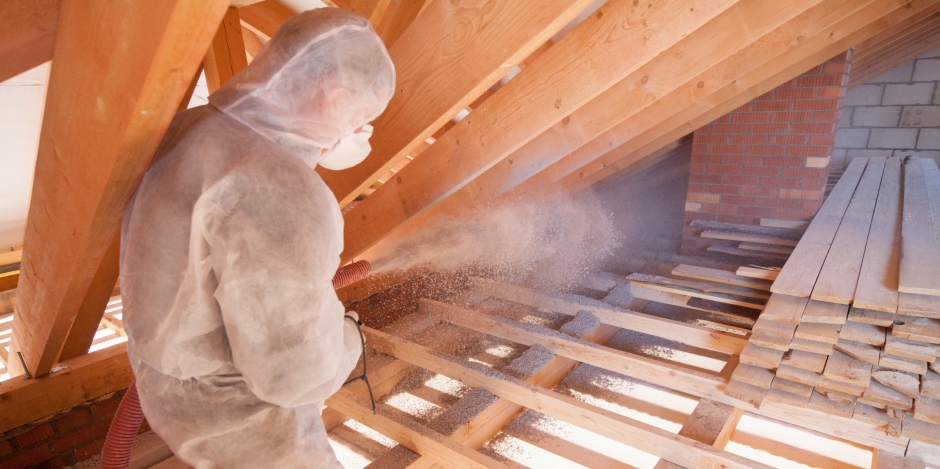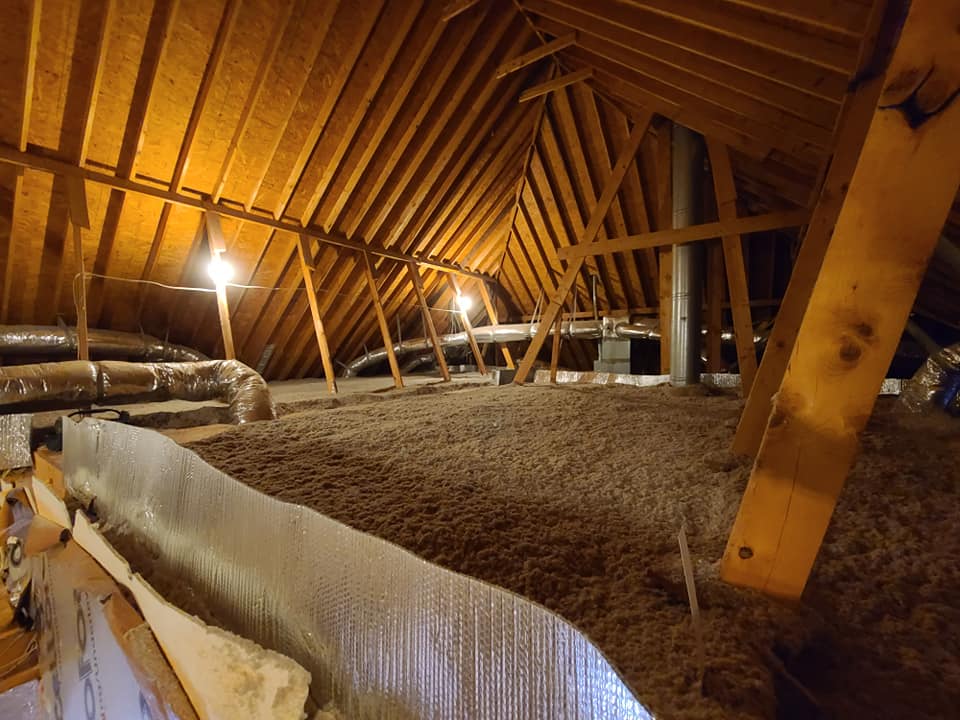Attic Insulation DFW: Increase Your Home's Worth and Performance
Wiki Article
Discover the Different Kinds Of Attic Insulation and Their Distinct Advantages for Your Home's Energy Performance

Fiberglass Insulation
Fiberglass insulation is one of one of the most generally utilized products for attic insulation as a result of its excellent thermal efficiency and cost-effectiveness. Made up of little glass fibers, this material successfully catches air, creating a protecting barrier that helps keep consistent interior temperatures. Its high R-value per inch makes it especially reliable at resisting heat transfer, which is vital for energy preservation in homes.
Installation of fiberglass insulation is fairly uncomplicated, frequently offered in batts or loose-fill kinds, suiting various attic setups. In addition, it is non-combustible and resistant to wetness, reducing the risk of mold advancement. This toughness adds to its long life, making fiberglass a sensible long-term financial investment for homeowners.
Furthermore, fiberglass insulation is commonly produced from recycled materials, which improves its eco-friendliness. The material can also add to soundproofing, minimizing noise transfer in between areas. While it is important to wear safety equipment throughout setup to prevent irritation from the fibers, the overall benefits of fiberglass insulation, including power financial savings and ecological factors to consider, make it a popular selection for improving attic room efficiency and advertising a comfy living environment.
Spray Foam Insulation
Spray foam insulation is a highly reliable alternative for attic insulation, known for its superior air securing and thermal efficiency. This innovative insulation product is made up of a mix of isocyanate and polyol resin, which, when incorporated, increases swiftly to fill up spaces and cavities in the attic space. Its ability to comply with different surfaces makes certain a constant barrier versus air leaks, substantially lowering heat loss throughout chillier months and heat gain throughout warmer periods.One of the vital advantages of spray foam insulation is its high R-value per inch, which means it gives exceptional thermal resistance in a fairly thin application. This is particularly advantageous in attic rooms where space is typically limited. Furthermore, spray foam can help decrease wetness buildup, minimizing the threat of mold and mildew development, which can be damaging to both the framework and interior air high quality.
While the first price of spray foam insulation may be more than traditional alternatives, its long-term power financial savings, combined with raised comfort and boosted home worth, make it a beneficial financial investment for property owners seeking improved energy efficiency. Attic Insulation DFW. On the whole, spray foam insulation attracts attention as an efficient solution for maximizing attic room insulation
Cellulose Insulation

Cellulose insulation is a prominent choice for attic room insulation, mostly composed of recycled paper items treated with fire retardants. This eco pleasant option is recognized for its outstanding thermal performance, effectively reducing heat transfer in both summer season and cold weather. The thick composition of cellulose permits it to fill spaces and voids in attic rooms, offering a smooth barrier versus air leakages.
One of the substantial benefits of cellulose insulation is its capacity to stand up to mold and mildew and pests, owing to the fire retardant therapies made use of during production. Additionally, it boasts a high R-value per inch, which equates into superior power efficiency. Homeowners can expect lower heating & cooling prices as an outcome of improved insulation.
Installment is normally accomplished with blowing loosened cellulose right into the preferred area, allowing for a effective and quick process. This method also minimizes disruption to the existing structure. Cellulose insulation Get the facts has a reasonably low ecological influence, as its production procedure makes use of recycled materials, contributing to sustainable building practices.
Rock Wool Insulation
try these out Among the various options for attic insulation, rock wool, likewise understood as mineral wool, stands out because of its remarkable thermal and acoustic performance. Made from recycled or natural materials, rock woollen is developed by melting rock and spinning it right into fibers, leading to an item that provides excellent insulation residential properties.One of the significant advantages of rock woollen insulation is its high R-value, which shows its efficiency in standing up to warm flow. This characteristic not only boosts power effectiveness however likewise contributes to maintaining a comfortable indoor temperature year-round. In addition, rock woollen is inherently fire-resistant, making it a safer alternative for homes as it can hold up against heats without melting or releasing toxic fumes.
Furthermore, rock wool insulation stands out in soundproofing capabilities, successfully reducing noise transmission in between areas and from outside sources. On the whole, rock wool insulation supplies a comprehensive option for enhancing power efficiency, safety and security, and comfort in household settings.
Glowing Barrier Insulation
Glowing barrier insulation serves as a reliable service for minimizing warm transfer in attics, especially in warmer climates. This kind of insulation jobs by reflecting induction heat away see this site from living areas, therefore decreasing the amount of warmth that enters a home during heat - Attic Insulation DFW. Usually made up of a very reflective product, such as light weight aluminum foil, radiant barriers are installed in attics, facing the roofing, where they can obstruct incoming warm from the sunThe main advantage of glowing obstacle insulation is its capability to reduced air conditioning prices. By reflecting warm instead than absorbing it, glowing obstacles can help maintain a more steady interior temperature level, reducing the work on cooling systems. This efficiency translates right into reduced energy expenses and boosted comfort for house owners.
In enhancement to power cost savings, radiant barriers can also add to improved indoor air top quality. By reducing heat buildup, they help reduce humidity levels, which can stop mold and mildew development and improve total air flow. When set up correctly, radiant barrier insulation can be an invaluable addition to any kind of energy-efficient home, making it a deserving factor to consider for house owners aiming to improve their attic insulation approach.
Final Thought
Finally, understanding the numerous types of attic room insulation-- fiberglass, spray foam, cellulose, rock wool, and glowing barriers-- enables homeowners to make enlightened decisions pertaining to energy performance. Each insulation type offers distinct benefits, such as remarkable thermal resistance, wetness management, and sound depletion. By picking the appropriate insulation product, substantial reductions in power costs can be accomplished, along with enhancements in interior comfort. Eventually, the right selection contributes to a much more lasting living atmosphere and advertises general power conservation.

In final thought, recognizing the various kinds of attic insulation-- fiberglass, spray foam, cellulose, rock wool, and glowing barriers-- makes it possible for home owners to make educated decisions pertaining to energy performance.
Report this wiki page